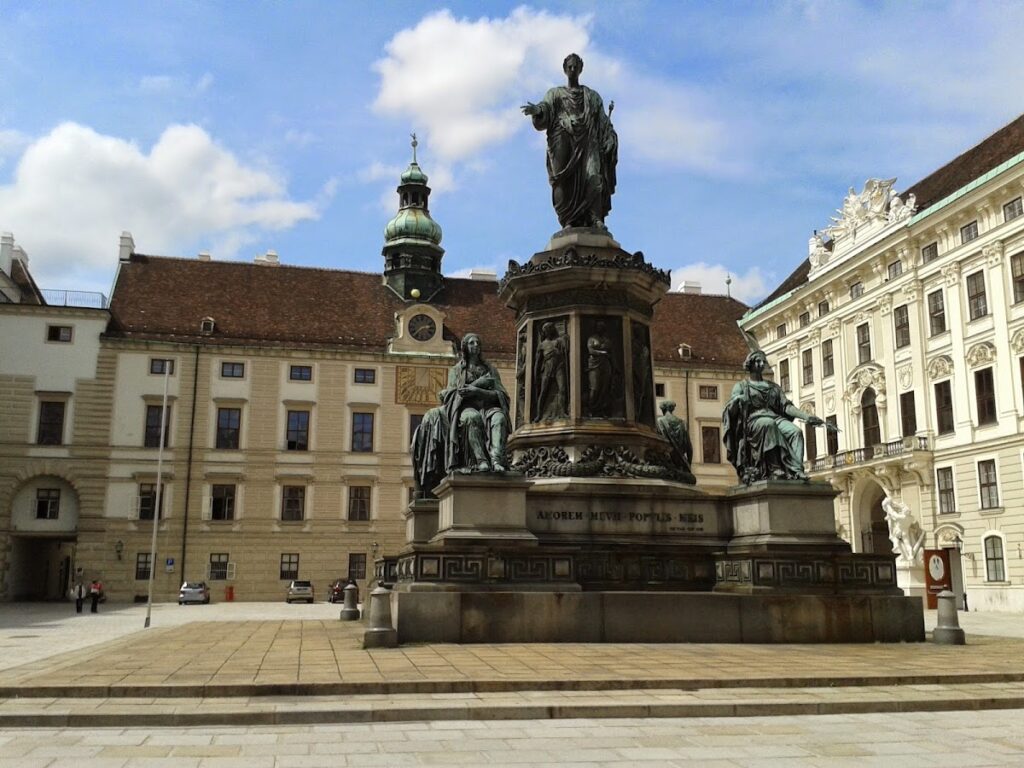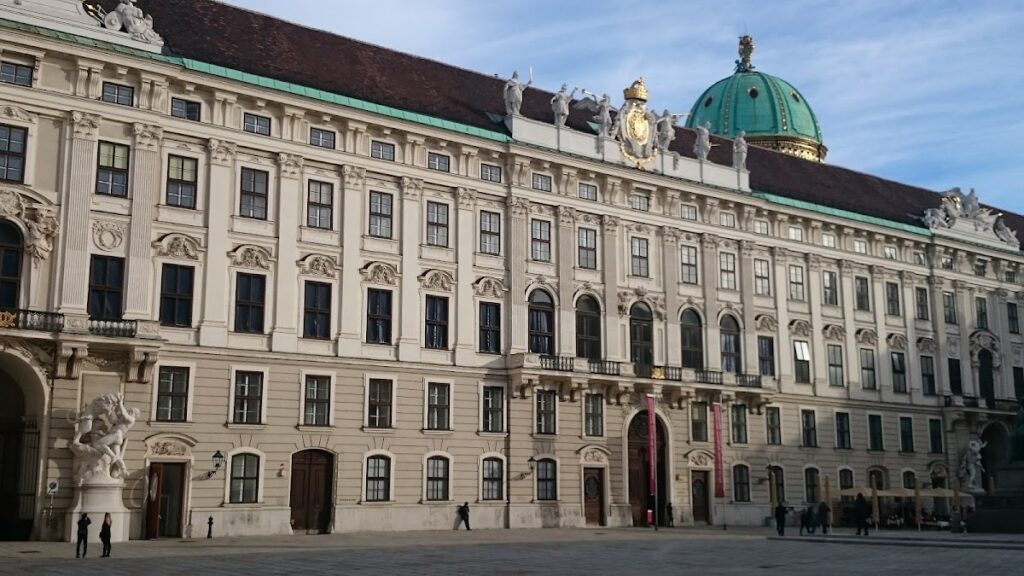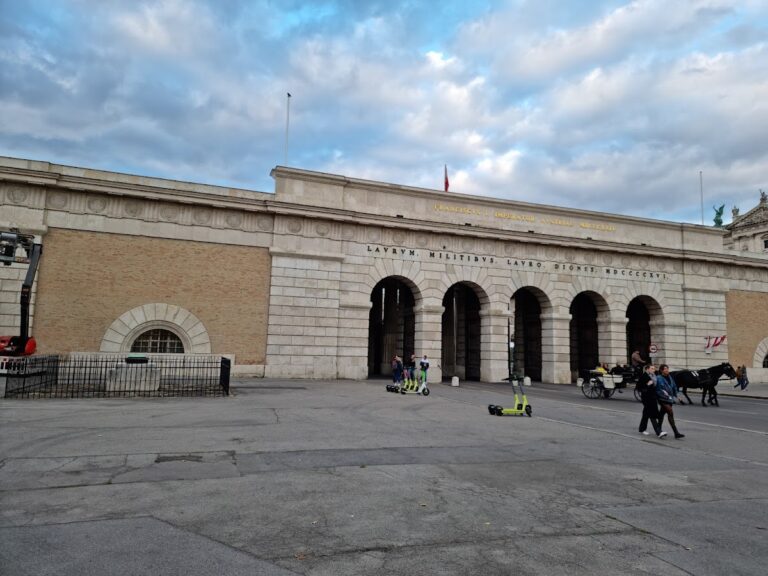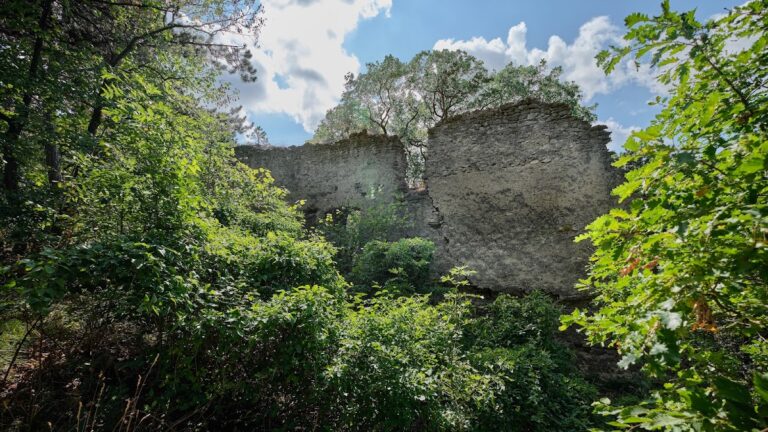Neue Burg Vienna: A Historic Imperial Palace Extension
Visitor Information
Google Rating: 4.7
Popularity: Medium
Google Maps: View on Google Maps
Official Website: www.khm.at
Country: Austria
Civilization: Unclassified
Remains: Military
History
The Neue Burg is located in Heldenplatz, Vienna, Austria. It forms the southeastern extension of the Hofburg palace complex and was constructed by the Austro-Hungarian Empire under Emperor Franz Joseph I during the late 19th and early 20th centuries.
The building’s history begins in 1881 when construction commenced as part of the grand Kaiserforum project, conceived to create a monumental imperial forum in Vienna. Designed by architects Gottfried Semper and Karl von Hasenauer, the project was intended to provide new space for imperial functions and to relieve overcrowding in the existing Hofburg. The plan included three wings: the Burggarten wing for the imperial family’s private apartments, the Volksgarten wing to house state guests, and a central Throne Hall for official ceremonies. However, only the Burggarten wing was completed, leaving the larger Kaiserforum unfinished.
Building the Neue Burg faced significant engineering challenges due to its foundation site, which lay over former city moats and old defensive structures. Foundations had to reach depths of up to 25 meters to ensure stability. After Hasenauer’s death in 1894, the construction responsibilities were shared among several architects, including Bruno Gruber, Otto Hofer, Emil von Förster, Julian Niedzielski, Friedrich Ohmann, and Ludwig Baumann, who led efforts until 1923 without completing the full original design.
Following the downfall of the Austro-Hungarian monarchy in 1918 and the establishment of the First Austrian Republic, the internal spaces of the Neue Burg remained largely unfinished. Only the central Corps de Logis section facing the Ringstraße was fully completed and was used for trade fairs and exhibitions throughout the 1920s and early 1930s.
During the period of Austrofascism from 1934 to 1938, the Neue Burg served political and cultural purposes by housing a historical arms exhibition that celebrated the Habsburg era. The building’s façade and interior spaces provided a backdrop for political rallies, including the large gathering following the assassination of Chancellor Engelbert Dollfuß in 1934.
Under Nazi rule between 1938 and 1945, the Neue Burg took on a prominent role in the regime’s propaganda activities. Most notably, Adolf Hitler delivered his announcement of the Anschluss, the annexation of Austria into Nazi Germany, from the building’s large terrace overlooking Heldenplatz in 1938. The site was also used to organize exhibitions promoting Nazi ideology and played a significant role in coordinating the looting and display of stolen art collections.
Since the end of World War II, the Neue Burg has been repurposed to host various cultural institutions and museums. These include the Austrian National Library’s reading rooms and its collection of papyrus manuscripts, the Ephesos Museum of ancient artifacts, and the Weltmuseum Wien, which showcases ethnographic collections. Additional permanent displays cover imperial hunting arms and armor, one of the world’s foremost weapons collections, as well as historical musical instruments. Since 2018, the building has also housed the House of Austrian History, a public museum dedicated to Austria’s recent past. The notable terrace from which Hitler spoke, often called the “Hitler balcony,” remains part of this institution but is currently closed to visitors.
Remains
The Neue Burg is a grand neobaroque edifice forming the southeastern segment of the Hofburg palace complex. The building rests on a site that historically included former city moats and underground military defenses, necessitating foundations up to 25 meters deep. These foundations incorporate porous Leitha limestone sandstone quarried at Winden am See, chosen for its durability in such a challenging environment. The portions of the supporting stone façade that bear the greatest weight are made from hard Wöllersdorfer stone, while the base is constructed of white limestone sourced near Süttö in Hungary. The exterior masonry facing consists of chalk karst limestone from the Istrian town of Marzana and Brač Island in Croatia, materials that give the building its distinctive appearance.
The façade oriented toward Heldenplatz is richly decorated with twenty statues created between 1895 and 1901. These figures represent a wide cross-section of Austria’s historical peoples, military personnel, and social groups. Crafted according to a program developed by Albert Ilg, the sculptures depict Marcomans, Roman soldiers, Bavarians, Slavs, Magyars, crusaders, knights, merchants, miners, and Tyroleans who fought in the year 1809. This ensemble contributes to the building’s narrative of Austrian history and identity.
The Neue Burg also features monumental wrought iron gates and grilles originally designed by Anton Biró. These metalworks were initially painted green and enhanced with gilding. During later decades, the color scheme was changed to black paint but early 21st-century renovations restored them to their original vibrant colors, highlighting their artistic and historical value. Alexander Nehr was responsible for many wrought iron and locksmith artistic details throughout the building, demonstrating a high level of craftsmanship.
Inside the completed Corps de Logis section of the Neue Burg, several important cultural collections are located. The Weltmuseum Wien exhibits ethnographic treasures from around the world, while the Hofjagd- und Rüstkammer holds one of the world’s most renowned collections of hunting weapons and armor. The collection of historic musical instruments is also housed here. Though the festive ballroom wing, known as the Festsaaltrakt, contains a grand festival hall covering some 1,000 square meters, this space mainly functions now as part of the Hofburg conference center.
Notably, Friedrich Ohmann designed and built a glasshouse located in the Burggarten park adjacent to the Neue Burg, which complements the palace wing architecturally and offers a light-filled space.
The building’s prominent terrace, measuring roughly 250 square meters, sits above the main portal facing Heldenplatz. This terrace is historically significant as the site from which Adolf Hitler proclaimed the Anschluss in 1938. It remains an integral, though currently closed, part of the House of Austrian History.
The Neue Burg seamlessly connects to the larger Hofburg complex and the surrounding Burggarten park. The open square of Heldenplatz itself is adorned with grand equestrian statues of Austrian field marshals Prince Eugene of Savoy and Archduke Charles, which frame the Neue Burg’s imposing neobaroque façade and reinforce the imperial character of the location.










